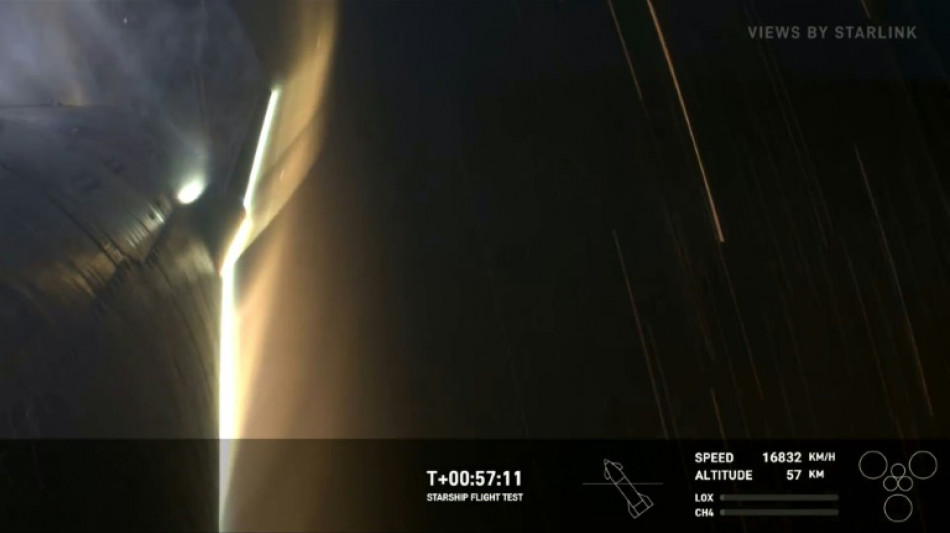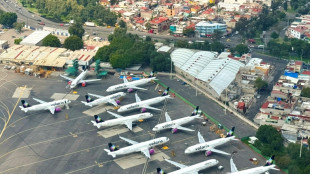
-
 Czechs name veteran coach Koubek for World Cup play-offs
Czechs name veteran coach Koubek for World Cup play-offs
-
PSG penalty hero Safonov out until next year with broken hand

-
 Putin says ball in court of Russia's opponents in Ukraine talks
Putin says ball in court of Russia's opponents in Ukraine talks
-
Czech Zabystran upsets Odermatt to claim Val Gardena super-G

-
 NGOs fear 'catastrophic impact' of new Israel registration rules
NGOs fear 'catastrophic impact' of new Israel registration rules
-
US suspends green card lottery after MIT professor, Brown University killings

-
 Arsenal in the 'right place' as Arteta marks six years at club
Arsenal in the 'right place' as Arteta marks six years at club
-
Sudan's El-Fasher under the RSF, destroyed and 'full of bodies'

-
 From farms to court, climate-hit communities take on big polluters
From farms to court, climate-hit communities take on big polluters
-
Liverpool have 'moved on' from Salah furore, says upbeat Slot

-
 Norway crown princess likely to undergo lung transplant
Norway crown princess likely to undergo lung transplant
-
Iraq negotiates new coalition under US pressure

-
 France's budget hits snag in setback for embattled PM
France's budget hits snag in setback for embattled PM
-
Putin hails Ukraine gains, threatens more, in annual press conference

-
 US suspends green card lottery after Brown, MIT professor shootings
US suspends green card lottery after Brown, MIT professor shootings
-
Chelsea's Maresca says Man City link '100 percent' speculation

-
 Dominant Head moves into Bradman territory with fourth Adelaide ton
Dominant Head moves into Bradman territory with fourth Adelaide ton
-
Arsenal battle to stay top of Christmas charts

-
 Mexican low-cost airlines Volaris and Viva agree to merger
Mexican low-cost airlines Volaris and Viva agree to merger
-
Border casinos caught in Thailand-Cambodia crossfire

-
 Australia's Head slams unbeaten 142 to crush England's Ashes hopes
Australia's Head slams unbeaten 142 to crush England's Ashes hopes
-
Epstein files due as US confronts long-delayed reckoning

-
 'Not our enemy': Rush to rearm sparks backlash in east Germany
'Not our enemy': Rush to rearm sparks backlash in east Germany
-
West Indies 110-0, trail by 465, after Conway's epic 227 for New Zealand

-
 Arsonists target Bangladesh newspapers after student leader's death
Arsonists target Bangladesh newspapers after student leader's death
-
Volatile Oracle shares a proxy for Wall Street's AI jitters

-
 Tears at tribute to firefighter killed in Hong Kong blaze
Tears at tribute to firefighter killed in Hong Kong blaze
-
Seahawks edge Rams in overtime thriller to seize NFC lead

-
 Teenager Flagg leads Mavericks to upset of Pistons
Teenager Flagg leads Mavericks to upset of Pistons
-
Australia's Head fires quickfire 68 as England's Ashes hopes fade

-
 Japan hikes interest rates to 30-year-high
Japan hikes interest rates to 30-year-high
-
Brazil's top court strikes down law blocking Indigenous land claims

-
 Conway falls for 227 as New Zealand pass 500 in West Indies Test
Conway falls for 227 as New Zealand pass 500 in West Indies Test
-
'We are ghosts': Britain's migrant night workers

-
 Asian markets rise as US inflation eases, Micron soothes tech fears
Asian markets rise as US inflation eases, Micron soothes tech fears
-
Giant lanterns light up Christmas in Catholic Philippines

-
 TikTok: key things to know
TikTok: key things to know
-
Putin, emboldened by Ukraine gains, to hold annual presser

-
 Deportation fears spur US migrants to entrust guardianship of their children
Deportation fears spur US migrants to entrust guardianship of their children
-
Upstart gangsters shake Japan's yakuza

-
 Trump signs $900 bn defense policy bill into law
Trump signs $900 bn defense policy bill into law
-
Stokes's 83 gives England hope as Australia lead by 102 in 3rd Test

-
 Go long: the rise and rise of the NFL field goal
Go long: the rise and rise of the NFL field goal
-
Australia announces gun buyback, day of 'reflection' after Bondi shooting

-
 New Zealand Cricket chief quits after split over new T20 league
New Zealand Cricket chief quits after split over new T20 league
-
England all out for 286, trail Australia by 85 in 3rd Test

-
 Australian announces gun buyback, day of 'reflection' after Bondi shooting
Australian announces gun buyback, day of 'reflection' after Bondi shooting
-
Joshua takes huge weight advantage into Paul fight

-
 TikTok signs joint venture deal to end US ban threat
TikTok signs joint venture deal to end US ban threat
-
Conway's glorious 200 powers New Zealand to 424-3 against West Indies


In first, SpaceX's megarocket Starship nails ocean splashdown
SpaceX's massive Starship rocket achieved its first ever splashdown during a test flight Thursday, in a major milestone for the prototype system that may one day send humans to Mars.
Scraps of fiery debris came flying off the spaceship as it descended over the Indian Ocean northwest of Australia, dramatic video from an onboard camera showed, but it ultimately held together and survived atmospheric reentry.
"Despite loss of many tiles and a damaged flap, Starship made it all the way to a soft landing in the ocean!" SpaceX CEO Elon Musk wrote on X.
"Today was a great day for humanity's future as a spacefaring civilization!" he added.
The most powerful rocket ever built blasted off from the company's Starbase in Boca Chica, Texas, at 7:50 am (1250 GMT), before soaring to space and coasting halfway across the globe, for a journey that lasted around an hour and five minutes.
With its fully reusable design, Starship is essential to fulfilling Musk's ambitious vision of colonizing the Red Planet and making humankind an multiplanetary species.
NASA meanwhile has contracted a modified version to act as the final vehicle that will take astronauts down to the surface of the Moon under the Artemis program later this decade.
- Trial-and-error approach -
Three previous test flights had ended in Starship's destruction, all part of what the company says is an acceptable cost in its rapid trial-and-error approach to development.
"The payload for these flight tests is data," SpaceX said on X, a mantra repeated by the commentary team throughout the flight.
During the last test in March, the spaceship managed to fly for 49 minutes before it was lost as it careened into the atmosphere at around 27,000 kilometers per hour (nearly 17,000 mph).
Since then SpaceX made several software and hardware upgrades.
Around seven minutes after liftoff, the first stage booster, called Super Heavy, succeeded in an upright splashdown in the Gulf of Mexico, to massive applause from engineers at mission control in Hawthorne, California.
The cheers grew even louder in the flight's final minutes. Ground teams whooped and hollered as the upper stage glowed a fiery red, the result of a plasma field generated by the friction of the vehicle streaking through the atmosphere.
Space fans around the world watched in awe, thanks to a live broadcast powered by SpaceX's vast constellation of Starlink internet satellites.
A chunk of flying debris even cracked the camera lens, but in the end, Starship stuck the landing.
"Congratulations SpaceX on Starship's successful test flight this morning!" NASA chief Bill Nelson wrote on X. "We are another step closer to returning humanity to the Moon through #Artemis -- then looking onward to Mars."
- Twice as powerful as Apollo rocket -
Starship stands 397 feet (121 meters) tall with both stages combined -- 90 feet taller than the Statue of Liberty.
Its Super Heavy booster produces 16.7 million pounds (74.3 Meganewtons) of thrust, about twice as powerful as the Saturn V rockets used during the Apollo missions, and later versions should be more powerful still.
SpaceX's strategy of carrying out tests in the real world rather than in labs has paid off in the past.
Its Falcon 9 rockets have come to be workhorses for NASA and the commercial sector, its Dragon capsule sends astronauts and cargo to the International Space Station, and its Starlink internet satellite constellation now covers dozens of countries.
But the clock is ticking for SpaceX to be ready for NASA's planned return of astronauts to the Moon in 2026.
To do this, SpaceX will need to first place a primary Starship in orbit, then use multiple "Starship tankers" to fill it up with supercooled fuel for the onward journey -- a complex engineering feat that has never before been accomplished.
China is planning its own crewed lunar mission in 2030, and has a better track record than the United States as of late of adhering to its timelines.
D.Cunningha--AMWN



